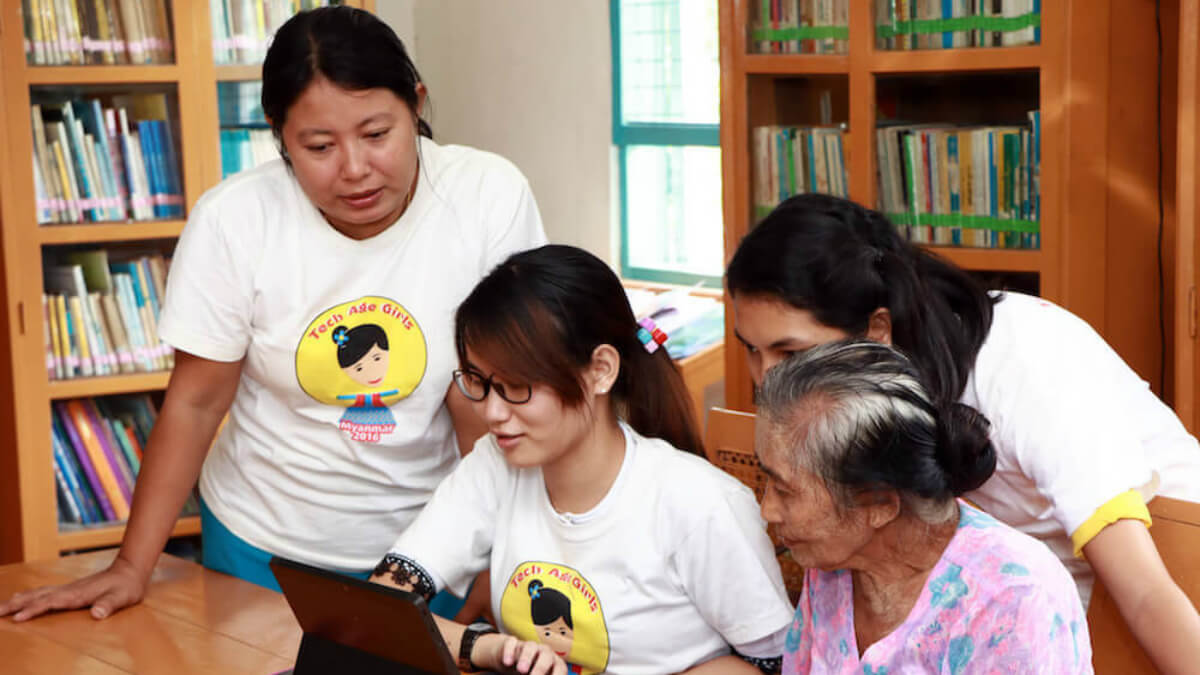This guest post was written by Amber Ehrke, Program Officer at IREX.
Ensuring that women and girls engage in the digital world is fundamental to Myanmar’s democratic and economic growth. Yet women are 28% less likely than men to own a mobile phone, the primary means of internet access in the country. More than just a gap in access, this divide is characterized by the fact that women tend to both perceive the benefits of technology and acquire digital skills differently
Last year, IREX conducted a political and economic analysis of Myanmar’s digital gender divide. The study produced three main findings:
- The digital gender gap is systemic
- Skills development is not keeping up with access levels
- Local actors are key to bridging the divide
Myanmar’s gender digital divide is systemic and detrimental
It limits how women and girls benefit from development processes, and it hinders Myanmar’s prosperity. At the same time, gender differences in technology use are widely perceived to be normative and personal choices. This makes it even more difficult for individuals and institutions such as donors, NGOs, and government to address.
Women and girls tend to have fewer opportunities to develop digital skills
Men and boys tend to have more control over ICT devices and more opportunities to acquire ICT skills at home and in places like cyber cafes and tea shops. Women have greater demands on their time, and less flexibility and mobility to use internet and computers in public spaces — and schools typically do not offer computer labs or classes.
As a result, when women do have opportunities to use technology, they tend to have more limitations on their skills and less awareness of the benefits of technology tools. These access and mobility challenges multiply for women at lower income levels, in rural areas, and in ethnic states where communities experience the largest infrastructure gaps and lowest literacy rates.
Women and girls don’t always perceive the benefits of using technology
Women are more likely to report that they have no need for technology, rather than citing affordability as a barrier. This is partly due to a lack of exposure — women tend to have more limitations on access and the skills that they develop. It’s also because existing content and tools don’t offer a significant payoff for the investments of time and money required to access that content.
Few local actors promote digital inclusion
Digital inclusion is fundamental to Myanmar’s democratic and economic growth. But the extent to which women and girls are currently excluded is neither fully acknowledged nor appreciated as a brake on development. Stakeholders often are not aware of how the gender digital divide impedes development, and few local actors — whether government agencies or non-state institutions — champion digital inclusion.
Stakeholders are not prioritizing gender equality
To a large extent, cultural norms underpin Myanmar’s gender digital divide — yet gender equality is not a priority for many of the stakeholders who support expanding ICT access and use. Often, stakeholders perceive that Myanmar has already achieved gender equality, or that it is a non-issue. As a result, they aren’t acknowledging or addressing one of the key contributors to the country’s gender digital divide.
To read the full report in English and Myanmar language, visit irex.org.
Amber Ehrke is a Program Officer at IREX working on gender, technology and access to information. Last year, she conducted field research on Myanmar’s gender digital divide.
